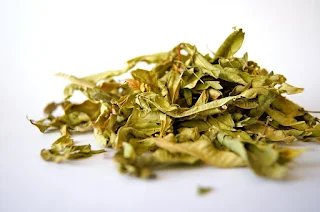Herbal Medicines And Nutraceuticals In Current Use
For centuries, traditional medicine (herbal medicine and nutraceutical) has been the source of treatment for man. However, with modern medicine, the push to phase out traditional medicine intensified. There was some level of success as scientists showed the world the advantage of modern medicine while highlighting the disadvantages of traditional medicine.
 |
| Herbal medicine and nutraceutical |
As it is well known all over the world, the best way to market your brand is through word of mouth. Words win with evidence. Modern medicine fails in some aspects of health. It was natural to seek alternatives. And the best choice was what has been tried and tested, herbal medicine.
Read Also: Guidelines for the production of herbal medicine
With the recent acceptance of herbal medicine, there is now a change of approach as more interest has been shown in herbal medicine. There has been a lot of documented evidence on the effectiveness of some herbal products.
Herbal Medicine And Nutraceutical In Use
Ginseng
Ginseng refers to 11 different varieties of a short, slow-growing plant with fleshy roots. The herb has a light-colored, forked-shaped root, a relatively long stalk, and green leaves in an oval shape. Examples are the American ginseng (Panax quinquefolius, L.) and Asian ginseng (P. Ginseng).
Researchers believe that ginsenosides, chemical components found in ginseng, are responsible for any clinical effects of the herb. Ginseng may help stimulate physical and mental activity in people who feel weak and tired. Ginseng may improve thinking processes and cognition. It can also reduce inflammation and improve male sexual performance. However, these claims have not been evaluated in standard laboratories around the world except by human perception.
Ginkgo Biloba
Ginkgo (Ginkgo biloba) is a large tree with fan-shaped leaves. The leaves are commonly included in supplements and taken by mouth. It is native to China, Japan, and Korea, but is also now grown in Europe and the United States. It seems to improve blood circulation, and might also act as an antioxidant to slow down changes in the brain. Also used for memory and thought problems, anxiety, vision problems, and many other conditions, but there is no good scientific evidence to support most of these uses.
St John's Wort
St. John's wort is a plant with yellow, star-shaped flowers. St. John's wort is most commonly used for depression and mood disorders. There is some strong scientific evidence that it is effective for mild to moderate depression. St. John's wort is also used for symptoms of menopause and many other conditions, but there is no good scientific evidence to support these uses.
Turmeric
Turmeric, sometimes called Indian saffron or the golden spice, is a tall plant that grows in Asia and Central America.Ground turmeric is also a major ingredient in curry powder.Curcumin is the active ingredient in turmeric. Use for inflammatory conditions, skin diseases, wounds, digestive ailments, and liver conditions.
Ginger
Ginger (Zingiber officinale) is a plant native to Asia. The ginger spice comes from the roots of the plant. The plant helps the brain and nervous system to control nausea. People commonly use ginger for many types of nausea and vomiting. It's also used for menstrual cramps, osteoarthritis, diabetes, migraine headaches, and other conditions, but there is no good scientific evidence to support many of these uses. There is also no good evidence to support using ginger for COVID-19.
Read Also: How to register a herbal medicine in Nigeria
Garlic
Garlic (Allium sativum) is an herb related to onion, leeks, and chives. Garlic produces a chemical called allicin. This is what seems to make garlic work for certain conditions. Allicin also makes garlic smell. Some products are made "odorless" by aging the garlic, but this process can also change the effects of garlic.
People commonly use garlic for high blood pressure, high levels of cholesterol or other fats in the blood, and hardening of the arteries. It is also used for the common cold, osteoarthritis, and many other conditions, but there is no good scientific evidence to support these uses. There is also no good evidence to support using garlic for COVID-19.
Read Also: Advantage and disadvantage of herbal medicine and nutraceutical
Valerian
Valeriana officinalis, commonly known as valerian, is an herb native to Asia and Europe. It is now also grown in the US, China and other countries. Valerian root contains a number of compounds including valerenic acid, isovaleric acid and a variety of antioxidants. It promote tranquility and improve sleep.
Chamomile
Chamomile is one of the most ancient medicinal herbs known to mankind. It is a member of the Asteraceae/Compositae family and represented by two common varieties viz. German Chamomile (Chamomilla recutita) and Roman Chamomile (Chamaemelum nobile). The dried flowers of chamomile contain many terpenoids and flavonoids contributing to its medicinal properties. Chamomile preparations are commonly used for many human ailments such as hay fever, inflammation, muscle spasms, menstrual disorders, insomnia, ulcers, wounds, gastrointestinal disorders, rheumatic pain, and hemorrhoids.

Comments
Post a Comment
Please have your say